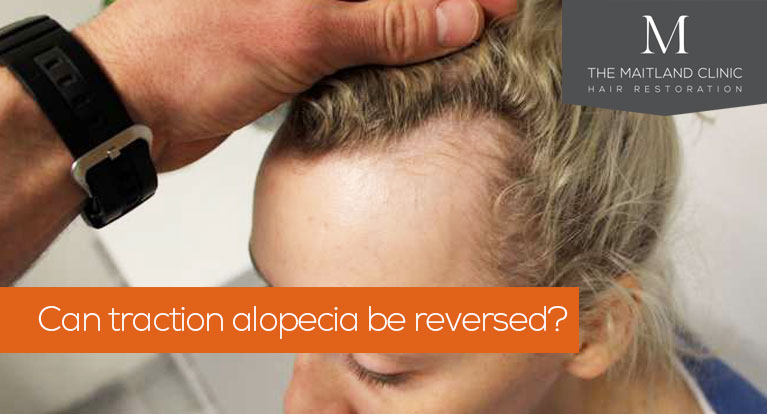Can Traction Alopecia be reversed?
25th September 2023

Traction alopecia is a form of hair loss that occurs when the hair is under constant tension, usually as a result of tight hairstyles like braids or ponytails. The repeated pulling damages the hair follicles and scalp, eventually leading to bald spots.
The condition can be worrying and many people are keen to know whether the damage can be fixed. So a common question we are asked at The Maitland Clinic is: can traction alopecia be reversed?
In our experience, traction alopecia can be reversed if it’s caught and treated early. This means eliminating the source of the tension as quickly as possible, for example, by choosing a less restrictive hairstyle. You might also be given medication or topical treatments to help reverse the damage. However, if the scarring is severe, the hair loss could be permanent.
Traction alopecia – signs and symptoms
Unlike some other forms of hair loss, traction alopecia is preventable and, in many cases, reversible. It’s therefore important to familiarise yourself with the symptoms so you can act quickly.
The early warning signs of traction alopecia can include:
- Small bumps, pimples or ulcers on the scalp or around the hairline
- A stinging or itching sensation
- Redness or soreness around the hairline or scalp
- Thin or broken hair, particularly in the areas where it’s been under particular strain
If the traction alopecia is more advanced, you may see extensive hair loss and bald patches, as well as smooth and shiny areas of skin that were previously covered in hair. Your scalp might also be tender and inflamed and you may experience frequent headaches.
Can traction alopecia be reversed?
The good news is that traction alopecia can be reversed, and you can regrow hair from traction alopecia, depending on how advanced it is.
In the early stages, simply eliminating the source of the tension should be enough to reverse the effects. If your traction alopecia is being caused by a tight hairstyle such as braids or cornrows, you’ll need to switch to a different style. Often the best option is to wear your hair down as this gives the hair follicles a chance to rest and recover. Over time, your hair should naturally start to grow back.
However, if your traction alopecia is severe, the damage may be irreversible. Extensive hair loss and shiny patches on the scalp could be a sign the hair follicles are severely scarred and unfortunately beyond repair. In this case, they won’t be able to grow new hairs and your only option may be to undergo a hair transplant. You can read more about whether it’s too late to fix traction alopecia here.
If you’re experiencing any of the symptoms of traction alopecia, do get in touch. The team at The Maitland Clinic will be happy to advise you on the best course of action.
How to reverse traction alopecia
There are a few simple things you can do to reverse the effects of traction alopecia – at least during the early stages. They include the following:
- Eliminate the source of the tension – this is essential if you want to regrow healthy hair naturally. Of course, exactly what this involves depends on what’s causing the pulling. If your traction alopecia is the result of a tight hairstyle, opt for a looser style or wear your hair down to reduce stress on the scalp. In other cases, tight headwear such as a cycle helmet can also lead to hair loss. If you suspect your helmet may be to blame, check it’s the right size and change it if necessary (regularly wearing a helmet that’s too tight can rub and pull your hair).
- Avoid using heat and chemical products – heat and strong chemicals can weaken your hair, making it more prone to breakages. If possible, minimise your use of styling tools like straighteners and stay clear of chemical products such as relaxants and hair dye.
- Be gentle when brushing and styling – to minimise further tension on the hair follicles, brush your hair gently and avoid tugging at the scalp. You should also avoid wearing rollers to bed or using elastic bands to tie back your hair.
- Moisturise your hair – dry, brittle hair is more prone to damage so consider buying a good-quality moisturising spray to keep it looking its best.
- Speak to a hair loss expert – a hair loss professional can assess the severity of your condition and put together a treatment plan tailored to your needs. As well as changing your behaviour, they might suggest using topical ointments or taking medication to aid the recovery process.
How long does it take to reverse traction alopecia?
Once you’ve stopped any practices that are causing your traction alopecia, you should start to see an improvement within a few months as traction alopecia starts to reverse. If the hair follicles aren’t too badly damaged, they’ll gradually begin to grow new, healthy hair.
Of course, reversing traction alopecia won’t happen overnight and you’ll need to be patient while your hair follicles recover. In some cases, it may take up to a year to fully reverse traction alopecia. However, bear in mind that if your condition is advanced, the hair loss may be permanent.
What to do if your traction alopecia can’t be reversed
If your traction alopecia is advanced and can’t be reversed through behavioural changes or medication, don’t panic. Surgical treatments such as Follicular Unit Extraction (FUE) and a Follicular Unit Transplant (FUT) may still be possible.
The Maitland Clinic has an excellent record of performing successful FUE and FUT hair transplants on patients with advanced traction alopecia. Our world-leading surgeon, Dr Edward Ball, executes this process with exceptional precision and artistry to create a natural look that blends seamlessly with your native hair.
We also see our patients as lifelong beneficiaries of our hair care services, meaning you’ll have access to a lifetime of professional hair care. You’re welcome to return to us at any point, whether that’s months or even years after your treatment. You can read more about our aftercare service here.
To arrange a consultation at The Maitland Clinic, please call 02392 706122 or email us at enquiries@themaitlandclinic.com.











